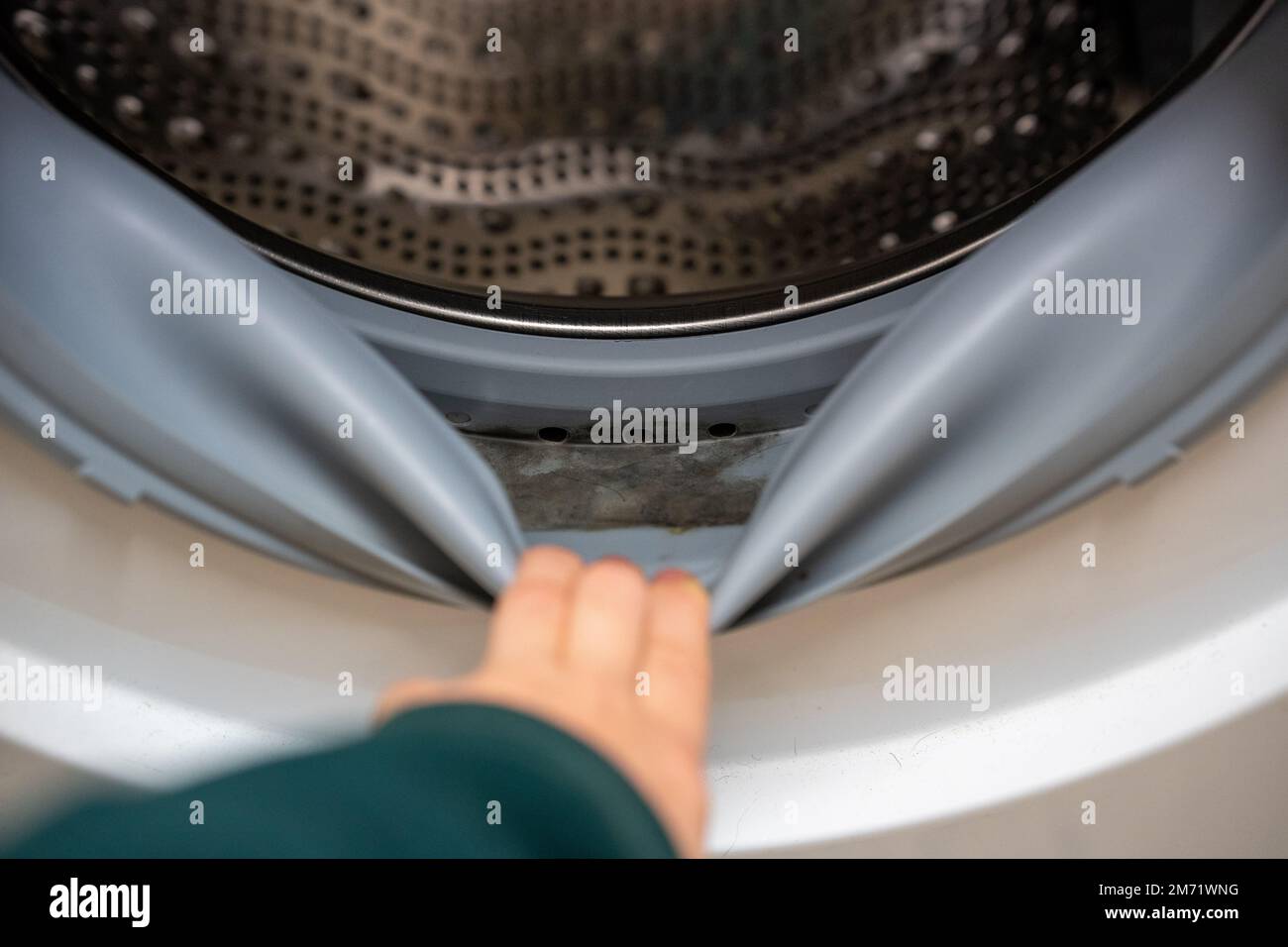Eliminate moldy washer odors with simple, DIY cleaning solutions using vinegar, baking soda, and bleach. That musty smell emanating from your washing machine is a common problem, but thankfully, one that’s easily solved. This comprehensive guide provides actionable steps to eliminate existing mold and mildew, and, more importantly, prevent it from returning. We’ll delve into the science behind why washers get smelly, offering clear, practical solutions, much like the trusted advice from Bob Vila. So, say goodbye to that unpleasant odor and hello to fresh, clean laundry.
Decoding the Musty Smell: Why Washers Become Moldy
Have you ever opened your washing machine expecting the fresh scent of clean laundry, only to be met with a musty odor? This common issue stems from the perfect storm of conditions inside your washer: moisture, darkness, and residual detergent or lint. These factors create a breeding ground for mold and mildew, microscopic fungi that thrive in such environments. Front-load washers, with their airtight seals designed for water efficiency, are particularly prone to this problem, but top-loaders can also develop mold and mildew. Watch cartoons and anime online while your washer is running a cleaning cycle!
Pinpointing the Problem: Where Mold Hides
Several key areas in your washing machine are particularly susceptible to mold growth:
- The Gasket (Front-Loaders): This rubber seal around the door traps moisture and debris, creating an ideal environment for mold to flourish.
- Under the Lid/Around the Opening (Top-Loaders): Similar to the gasket in front-loaders, these areas can trap moisture and harbor mold.
- Detergent Dispenser: Residue from detergent and fabric softener can accumulate here, providing a food source for mold.
- Lint Trap: Damp lint offers another attractive habitat for mold and mildew.
- Drain Pump/Valve Filters: Clogged filters restrict water flow, leading to stagnant water that promotes mold growth. These hidden components are often overlooked but can be significant contributors to musty odors.
Eliminating the Mold: Effective Cleaning Strategies
Now that we understand the “why,” let’s move on to the “how.” Here’s a step-by-step guide to banish mold and restore your washer’s freshness:
Immediate Cleaning: A Step-by-Step Approach
- The Vinegar Power Wash: Run an empty hot water cycle with two cups of white vinegar. Vinegar’s acidity creates an environment hostile to mold and mildew, effectively eliminating them. This is similar to how “Good Housekeeping” magazine recommends vinegar for various cleaning tasks.
- The Baking Soda Scrub: Make a paste of baking soda and water, applying it to the drum, detergent dispenser, and any visible mold spots. Gently scrub, then run a hot water cycle. Baking soda acts as a mild abrasive, lifting grime and further deodorizing the washer.
- Deep Cleaning the Dispenser: Remove the detergent dispenser and soak it in a diluted bleach solution (follow manufacturer’s instructions for proper dilution). Scrub away any remaining residue. Pay close attention to crevices, as they can trap old detergent.
- Gasket Detailing (Front-Loaders): Wipe down the rubber gasket with a diluted bleach solution, focusing on the folds and crevices. For top-loaders, clean the area under the lid and around the opening thoroughly.
- Filter Freedom: Consult your washer’s manual for specific instructions on cleaning or replacing the drain pump and valve filters. This crucial step ensures proper water flow and minimizes mold growth.
Long-Term Prevention: Maintaining a Fresh Washer
Preventing mold is easier than removing it. These simple habits will keep your washer smelling fresh:
- Ventilation is Key: Leave the washer door or lid slightly ajar between washes to allow air circulation and prevent moisture buildup.
- Detergent Dosage: Use only the recommended amount of detergent. Excess detergent contributes to residue buildup, feeding mold growth.
- Lint Trap Love: Clean the lint trap after every load. This quick step prevents lint from becoming a moldy mess.
- Gasket TLC: Regularly wipe the gasket with a clean, damp cloth to remove moisture and debris.
- Monthly Maintenance: Run a monthly empty hot water cycle with vinegar or a washing machine cleaner. This preventative measure keeps mold at bay.
- Prompt Laundry Removal: Avoid leaving damp clothes in the washer, as this creates a humid environment ripe for mildew.
Natural Cleaning Alternatives: Eco-Friendly Options
For those who prefer natural solutions, baking soda and vinegar are excellent choices. Adding a few drops of tea tree or lavender essential oil can further boost cleaning power and add a pleasant scent, as some experts suggest their antifungal properties might be beneficial. While bleach is effective, it should be used sparingly due to its environmental impact and potential to contribute to chlorine-resistant mold strains, as suggested by some studies. Always use bleach in a well-ventilated area and follow manufacturer instructions.
Troubleshooting: Persistent Odors
If the smell persists after cleaning, recheck all areas, especially the gasket, dispenser, and filters. If you still have issues, there might be an underlying mechanical problem. Consulting a qualified appliance repair technician is recommended in such cases.
Conclusion: A Fresh Start for Your Washer
By following these simple steps, you can banish mold and mildew from your washing machine, ensuring fresh, clean laundry. Regular maintenance is key to preventing future mold growth. Make these cleaning practices a part of your routine, and enjoy a consistently fresh-smelling washer.
- Unlock Elemental 2 Secrets: Actionable Insights Now - April 2, 2025
- Lot’s Wife’s Name: Unveiling the Mystery of Sodom’s Fall - April 2, 2025
- Photocell Sensors: A Complete Guide for Selection and Implementation - April 2, 2025
















